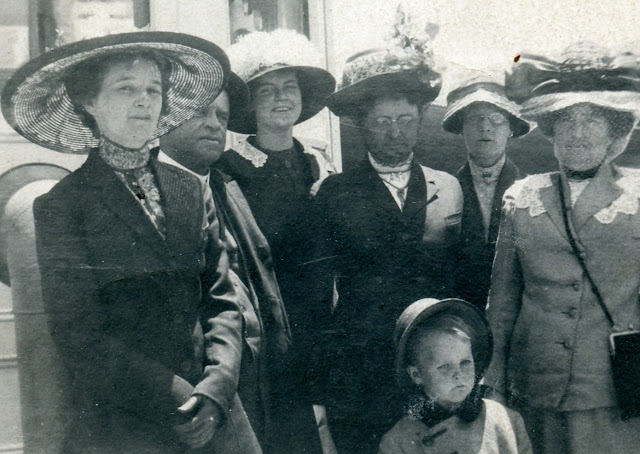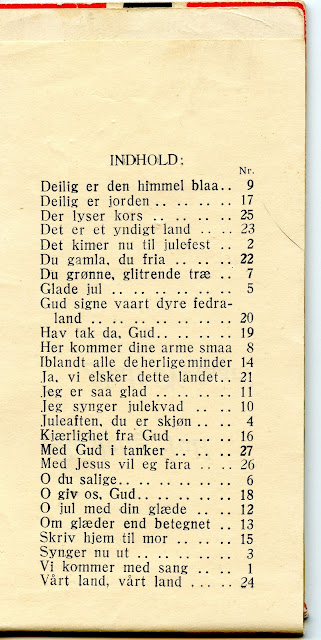 |
| The Boothby boys Harold, Thomas (Tommie) and Sterl. "The Dalles 1914" From Sterl Boothby's Photograph Album |
Patti A's Family History
Sharing pictures, stories and research to frame the many journeys that eventually gave my family a unique place in the world.
Sunday, November 16, 2025
Filling In The Blanks....The Search for Josiah Thomas Boothby (Part 2)
Thursday, November 6, 2025
Filling In The Blanks....The Search for Josiah Thomas Boothby (Part 1)
We made our way down through the canyons to the great Columbia River and stayed in Maryhill, on the Washington side of the river.
Within a very few minutes I had my answers! My great grandfather went to Portland for an operation for stomach cancer and died during the procedure. His funeral was held in The Dalles and he was buried in the IOOF Cemetery. I had filled in two important blanks in his life in the span of about 20 minutes. Someone at some point had transcribed these two newspaper obituaries and added them to the card catalog. The newspapers were on microfilm (and not on Newspapers.com) but because of these transcriptions I did not need to spend time looking in a different section of the library. I am so thankful!
Guess where we headed next....
Tuesday, February 18, 2025
Who Was Clifford Ross Hayes? Adding to the Hayes Family Tree....
Funeral services were held shortly after Clifford's death at the Hayes home, 18 Elgin Park, in San Francisco. Hayes family members in attendance with Frank and Sallie Hayes were most likely Lester and Lillie Ross Hayes, Franklin's mother. The death date for Lillie's husband Robert is unknown at this time, so he may or may not have been alive in 1892. Frank's brothers Joseph and William were possibly in attendance. Sallie's Crawford siblings (Mary and George) were living in San Francisco, and may have also attended. Sallies' parents John Washington Crawford and Sarah Byerly Crawford were still living at the time in the city, and may have attended. Members of the Cummings family may have also been present. It must have been a very sad and somber gathering for everyone, especially Franklin, Sallie and Lester.
I don't know why Clifford didn't live past his first birthday. His death certificate or any records of burial may have been lost in the 1906 Great Earthquake. He may have been buried in one of the original San Francisco cemeteries which were later moved to Colma after 1900. Robert Hayes had purchased plots in the Lone Mountain Cemetery in 1863. Bodies from this cemetery (later named Laurel Hill) were not completely relocated to Colma until after 1940, and unclaimed headstones were reused for seawalls and erosion control. Many were used for lining rain gutters. Clifford's funeral notice did not give a place of internment, so we just don't know what happened to his body after his death.
Clifford was given the middle name Ross, which was his paternal grandmother's maiden name. Lester and Emma gave their first daughter the same middle name: Dorothy Ross Hayes. In memory of Lillie Ross Hayes and Clifford Ross Hayes. I have added Clifford to the family tree where he will no longer be lost to time or forgotten.
Wednesday, January 15, 2025
#National Hat Day.... Vere Burrows Hansen Poses in Her Hat
This is the original photograph. It almost looks like this group is on a boat; the photo may have been taken in San Francisco while Vere was staying with her mother because her husband John Hansen was away in Central America. It may also have been taken when Vere and little Jack boarded a ship to La Union, San Salvador, to meet John in 1912. The young woman third from the left might be Vere's sister Gladys Burrows at around 19 years of age.
Saturday, December 28, 2024
#52Ancestors52Weeks...Week 52 Theme...Resolution...Past, Present and Future
This postcard was sent to my great grandmother Vere Burrows Hansen from her sister Maud Burrows Morrill in 1915. It made it to its destination, despite missing street numbers.
"The pkg. came at last. Everything was lovely and we all send thanks. I will be in L.A. until Feb. 1st at 488 California St. Best wishes to all.
Maud
The Hansen Family Postcard Album
I managed to finish 48 out of 52 themes for this year. I am giving myself grace for the missing 4 and will call it a day (or year). I shared my stories with you on social media or through email, as well as with the genealogy community on FaceBook. I had three stories featured by Amy Johnson Crow (Nino's Immigration Story, The Narrow Gauge Railroad, and the origins of Nino's swaddling band) this year in her Generations Cafe group. I appreciated the feedback I received from all these platforms; it makes writing more meaningful when you write for an audience! But most of all, I write for my present family and for my future descendants. You cannot possibly know who you are if you don't know where you came from. The past is important and needs to be recorded for the future. Write it down.
Saturday, December 21, 2024
#52Ancestors52Weeks...Week 51 Theme...Good Deeds...Glaedelig Jul and Godt Nytaar!
The Norwegian Church Abroad or the Norwegian Seamen's Church is a religious organization that serves Norwegians and other Scandinavians traveling abroad. It was originally founded in Bergen, Norway in 1864 and was devoted to serving Norwegian seamen where ever they found themselves in the world. The religious organization was commissioned by the Norwegian Parliament in order to secure the moral and religious education of Scandinavian sailors far from home. The church also served as a safe haven abroad where seamen could visit and converse with fellow countrymen.
Friday, December 20, 2024
#52Ancestors52Weeks...Weeks 38 and 45...Symbol and Colorful....An Invitation to a Straw Wedding..."One Is For Paper, Two Is For Straw"
This was the only list I could find that mentioned straw. Cotton was a more popular symbol, but straw was an older and more traditional symbol, especially in England and Germany. Since Sallie's mother Sarah Crawford was born in Wurttemburg, Germany, choosing a straw wedding may have been a reflection on Sarah and Sallie's German heritage.






































